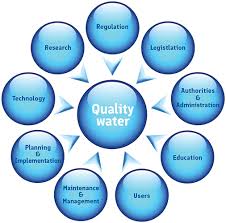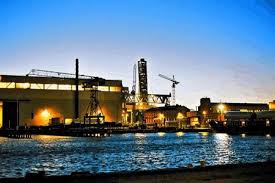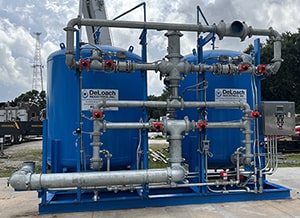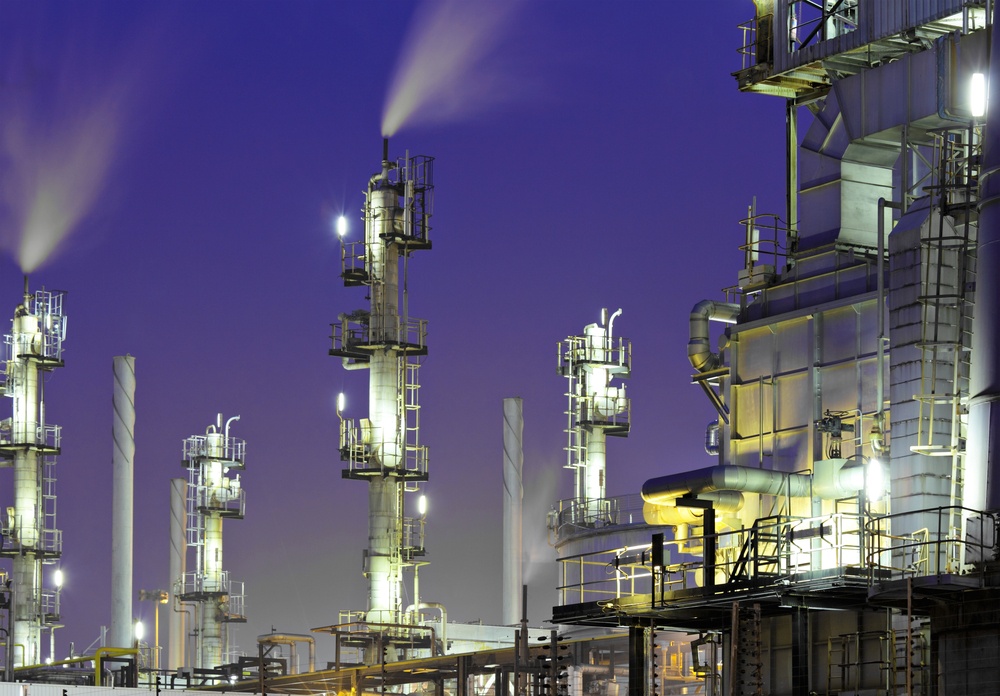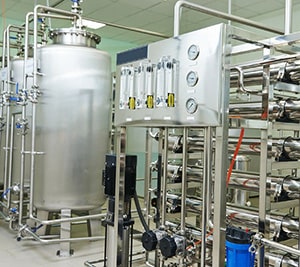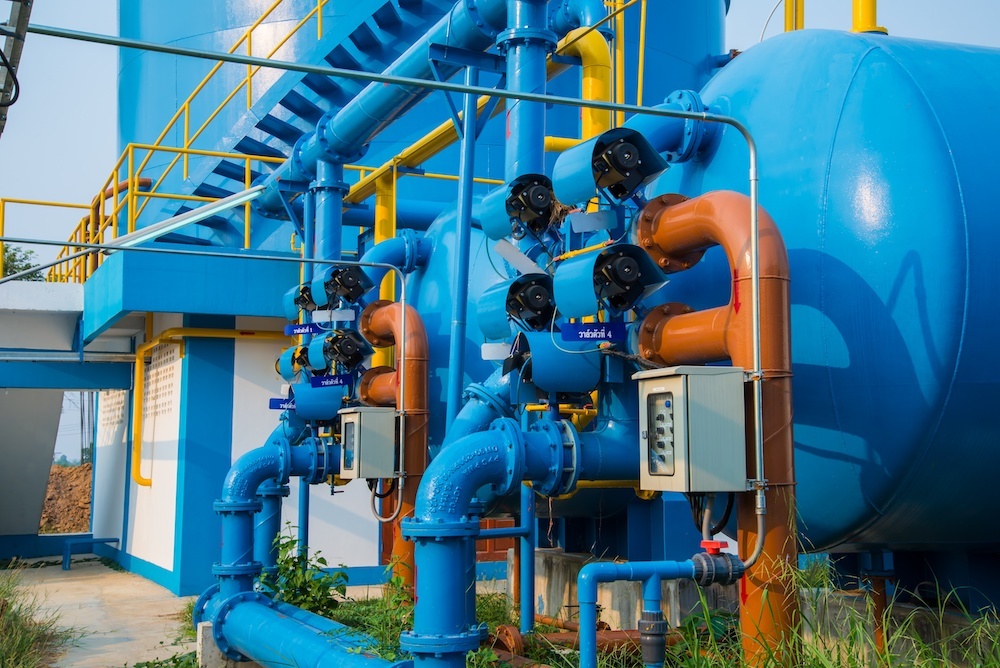The water treatment industry has developed and evolved over the years to continue to find new ways to produce degassed water,
Read More
Topics:
water quality,
degasification,
pH levels of water,
water treatment,
advanced treatment solutions,
water plant,
safety,
hydrogen sulfide (H2S),
Chemical Odor,
media packing,
pH levels,
Decarbonation,
dissolved gases,
wastewater,
Global,
carbon dioxide,
decarbonator,
degasifier,
gases,
RO membrane,
H2S Degasifier,
degassed water
Many types of water treatment systems depend on some type of media to provide the best performance required as it relates to water treatment and waste water treatment. For use in reverse osmosis there is a reliance on membranes which act as filters to separate the solids from the water. For ion exchange there are “resins” whether AION or CATION the resins works to treat hard and corrosive water. Degasification and decarbonation towers both require an internal media and sometimes this is referred to as “Random Packing” or “Loose Fill Media” and in this process the media acts like a traffic cop directing traffic.
In this case it directs the water on its way down and through a towers internals where it is constantly reshaping the water droplets over and over again forcing gas molecules to come to the surface edge of the water where they are removed. Carbon filters also require a media which is of course “Carbon”. The carbon media acts like a sponge absorbing the contaminants that you wish to remove from the water until it is saturated and must be replaced or regenerated. Even sand filters or pressure filters require a media.
Read More
Topics:
degasification,
water treatment,
water plant,
media packing,
Decarbonation,
ION Exchange Resin,
feed water,
wastewater,
decarbonator,
gases,
RO membrane
Ten years ago if I had purposed that one day our water would have artificial intelligence I think I would have been laughed out of the industry. But now, anything you can imagine with the new electronic revolution is possible because of the current revolution referred to as “The Internet of Things” (IoT). Placing nano-size SIP (Systems in a package) into a water stream and tracking its path or location or performing inspections on critical infrastructure or equipment is now a reality.
Read More
Topics:
degasification,
water treatment,
advanced treatment solutions,
water plant,
phosphate levels,
pH levels,
Alkalinity,
Global,
decarbonator,
degasifier
One of the largest consumers of energy in the US is water and wastewater treatment plants.
Because of the need for large horsepower pumps and blowers, a municipal water and wastewater treatment plant consumes a tremendous amount of kilowatt hours of electricity. The energy cost is factored into the “cost of production” of water or wastewater treatment, and the “rate base” charge is increased accordingly to the consumer.
Does Renewable Power Work in a Water Treatment Plant?
Because solar energy is “space intensive,” you do not see a lot of solar power being deployed across the USA at water treatment plants. In our opinion, this is a mistake, and most likely, the decision was made back when solar power output was much lower. With the increased efficiency of solar panels and decreased production cost, it makes tremendous sense to revisit the use of Solar energy to offset the operational cost of a water treatment plant or wastewater treatment plant operation.
Providing solar energy for specific pieces of process equipment is also a viable option when you consider deploying solar energy. For example, operating a Degasification tower or Decarbonator utilizing 10 350-watt solar panels will generate 3500 watts during peak daylight hours and enough to offset the cost of smaller horsepower blower motors. If the solar panels are configured as a canopy, they can also provide a nice shade or protective barrier above the piece of equipment if installed outdoors, as most packed column towers are located outside.
What about other forms of renewable energy? Do they work?
At water treatment or wastewater treatment facilities. Co-generation use has been around for many years at Wastewater plant facilities wastewater treatment plants. A cogeneration unit is a combination “Generator” to produce power and a “Thermal” energy source to produce heated water. The water can be used domestically or can be used to produce chilled water with the help of a Chiller system. The wastewater treatment plant provides a critical component by producing gases such as “Methane,” which can be used as a cogeneration unit fuel source. Water treatment plants do not produce methane or other combustible forms of gases like a cogeneration plant would produce, so you normally do not see Cogeneration system units deployed at a Water treatment facility.
Read More
Topics:
degasification,
water treatment,
water distribution system,
advanced treatment solutions,
water plant,
Decarbonation,
wastewater,
Recycling,
Global,
steam generation,
steam
Protecting Your Pharmaceutical Water: Ensuring Quality and Efficiency in Water Treatment
In the pharmaceutical industry, the removal of dissolved gases from water is a critical step in the water treatment process. However, it is essential to select the appropriate method of removing these gases, as the wrong choice can have detrimental effects on vital process water equipment such as steam boilers and distillation columns. Failure to address high levels of carbon dioxide (CO2) in the water can lead to the formation of carbonic acid, which corrodes and damages both the steam boiler tubes and distillation columns. To mitigate these risks, the implementation of a degasification tower or "Degasifier" is crucial, as it effectively removes dissolved gases like hydrogen sulfide (H2S) and carbon dioxide (CO2) to acceptable levels below 7 parts per billion (ppb).
Utilizing a degasification tower offers a cost-effective solution to reduce and eliminate gases in the water stream. In comparison, alternative methods such as reverse osmosis (RO) membranes require additional steps, including pH adjustment, to achieve similar results. The conversion of carbon dioxide (CO2) into carbonates can result in increased membrane fouling and elevated capital costs for the RO system. By implementing a degasification system, businesses can achieve optimal performance, minimize membrane fouling, and benefit from cost savings in both capital and operational expenses.
Read More
Topics:
degasification,
water treatment,
hydrogen sulfide (H2S),
dissolved gases,
pharmaceutical water,
carbon dioxide,
degasifier,
gases,
RO membrane,
carbonic acid,
RO system
The importance of removing Carbon Dioxide in the water!
Carbon dioxide exists naturally in nature as free CO2 and can be found in many water sources from lakes, streams, or other surface water bodies. Carbon dioxide occurs naturally in small amounts (about 0.04 percent) in the Earth's atmosphere. Monitoring CO2 levels in your water can be done through test kits or monitoring systems. When monitoring CO2 levels, it is important to note the concentration at which the monitoring needs to occur. Industrial level ion exchange systems should be monitored at a concentration typically 15–20 times greater than required for drinking water quality. Ion exchange systems used for high purity water production should be monitored at a concentration typically 40–50 times greater than what is required for drinking water quality. Due to carbon dioxide’s abundance and its role as the primary driver of climate change, there are concerns about increasing concentrations of this gas in the atmosphere. To reduce the amount of carbon dioxide in the atmosphere, people can reduce the amount of carbon dioxide released during energy production by using renewable energy sources and energy efficiency. Carbon dioxide can be captured and stored underground with carbon sequestration technologies.
Read More
Topics:
degasification,
water treatment,
advanced treatment solutions,
Decarbonation,
ION Exchange Resin,
carbon dioxide,
CO2 in water,
excess co2,
hydrogen ion
Saving Steam with Degasification: Optimizing Water Treatment for Cost Efficiency and Enhanced Performance.
Read More
Topics:
degasification,
Decarbonation,
steam generation,
carbon dioxide,
steam,
decarbonator,
distillation
Water treatment in the Caribbean poses unique challenges due to the specific characteristics of the region.
Read More
Topics:
water treatment issues,
water quality,
degasification,
pH levels of water,
water treatment,
advanced treatment solutions,
water plant,
odor control scrubber,
pH levels,
Alkalinity,
Recycling,
Caribbean,
Global
The Term referred to as “Degasification” or "Decarbonation" and how they work
Relates to the process of the removal of suspended gas or solids that are converted to a gas-based upon certain criteria during water filtration, treatment, membrane filtration, or attempting to adjust pH. When removing (CO2) the process is often referred to as “Decarbonation”, when removing (H2S) the process is often referred to as “Degasification”.
Degasification is the most economical method for
the removal of Hydrogen Sulfide (H2S), Carbon Dioxide (CO2), and Oxygen (02) can all be removed by “Degasification”. The other variables are the total inlet water flow rate, the inlet feed temperature of the water, the ambient air temperature, the inlet concentrations that can be expressed as parts per billion (ppb), parts per million (ppm) or Mg/l, and the desired effluent removal levels also expressed in the same method. It is also important to fully understand the actual application and the use of the water to determine how critical maintaining critical levels are and what impact variations will create for the final use. Understanding these variables will aid you in the design of the system and any additional redundant systems needed to assure full compliance with standards.
Read More
Topics:
degasification,
water treatment,
advanced treatment solutions,
hydrogen sulfide (H2S),
pH levels,
Decarbonation
Do you need to remove or increase your reverse osmosis system's hydrogen sulfide removal efficiency?
The industrial water treatment market has many forms of water treatment processes. Most of us would agree that maintaining high water standards and quality requires using multiple treatment systems to achieve results. Let’s face it, we do not win or get a “that a boy” when we design and build the best reverse osmosis system.
When we turn the brand-new water system on, the water has a "rotten egg odor." Yes, that is an embarrassing moment!
The problem is we typically design around what we can see or read. When was the last time you reviewed a water sample that provided details of how much-dissolved gas was in the water? Most likely never. A typical water treatment system may deploy reverse osmosis as the primary treatment method, and why true RO will remove particles that have size and weight (ions and molecules) typically defined as a certain size (micron), but RO does nothing to remove the dissolved gases that are already entrained within the water naturally or were created by adjusting the pH.
Read More
Topics:
water treatment issues,
water quality,
degasification,
pH levels of water,
water treatment,
advanced treatment solutions,
hydrogen sulfide (H2S),
pH levels,
Alkalinity,
Langilier index (LSI),
H2S Degasifier,
H2S H2O,
removing hydrogen sulfide in water
